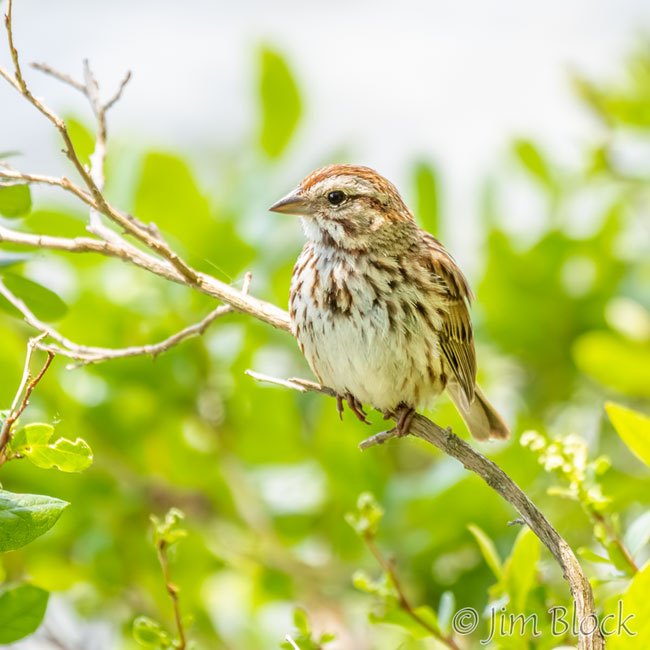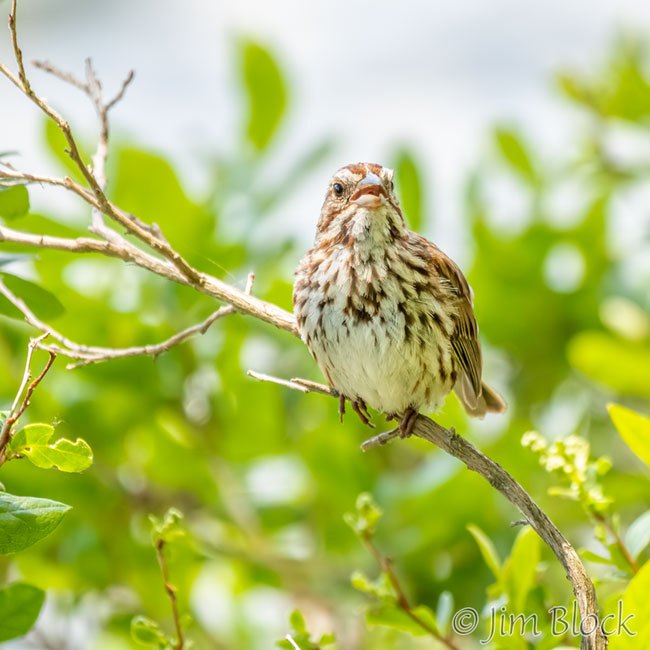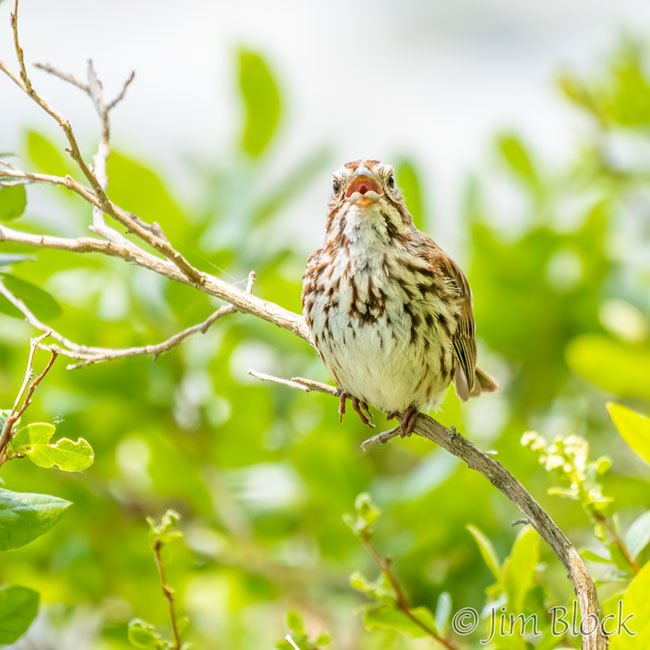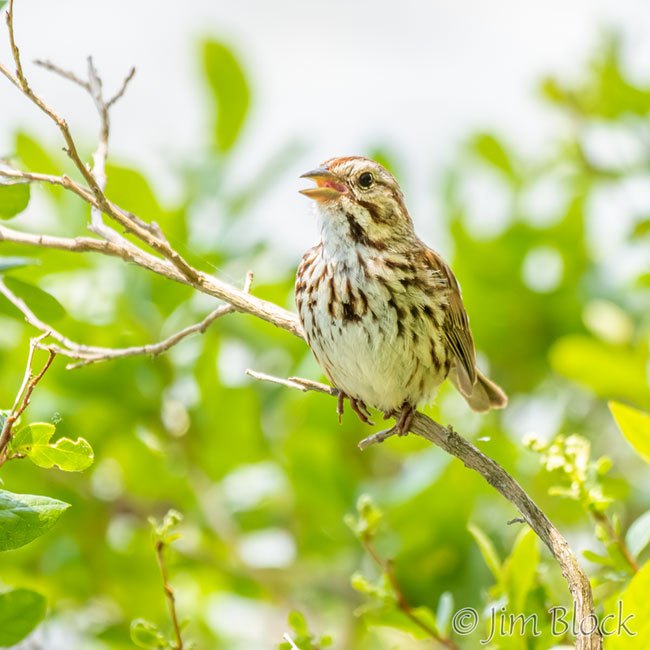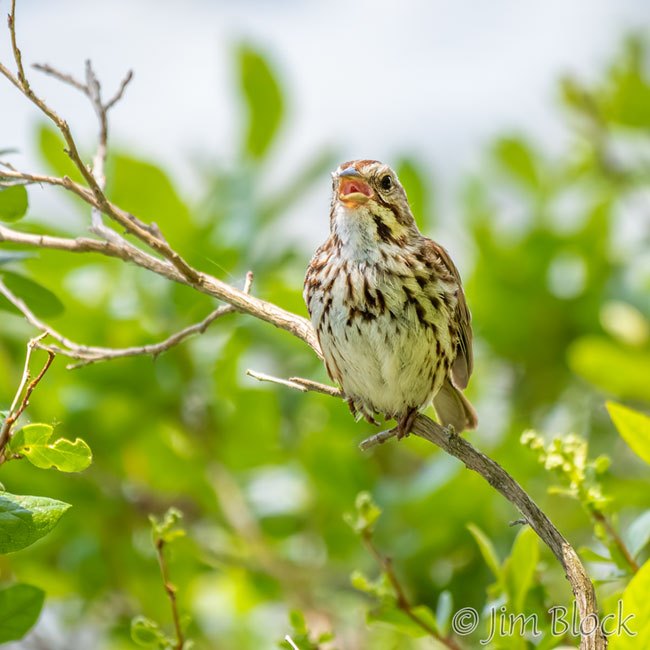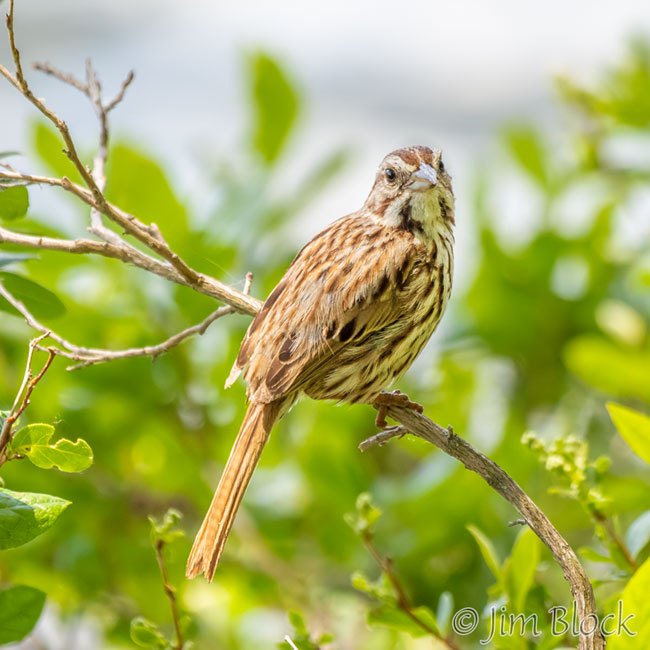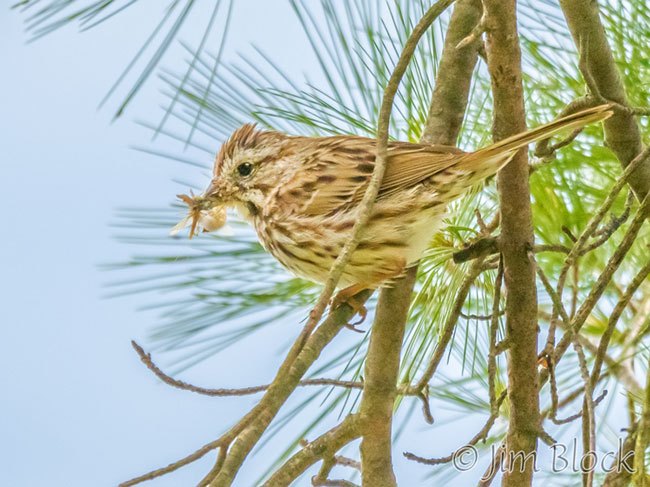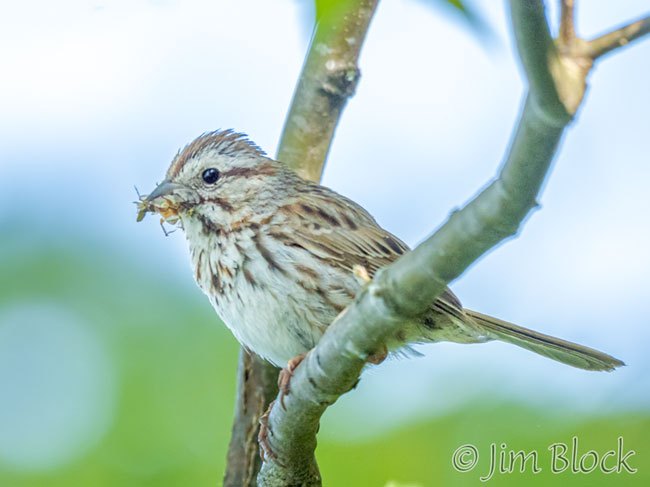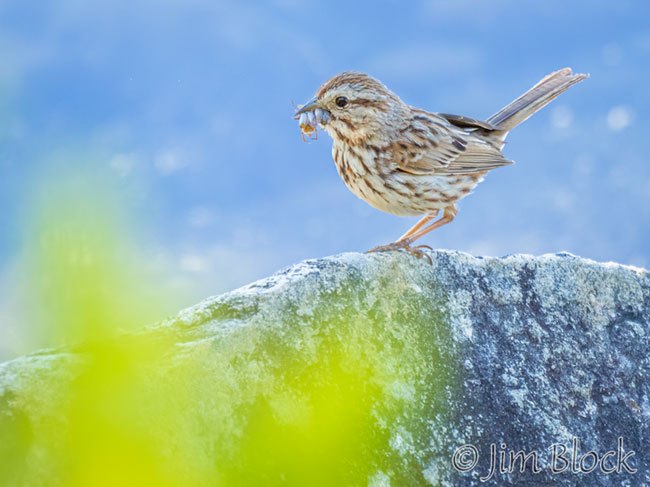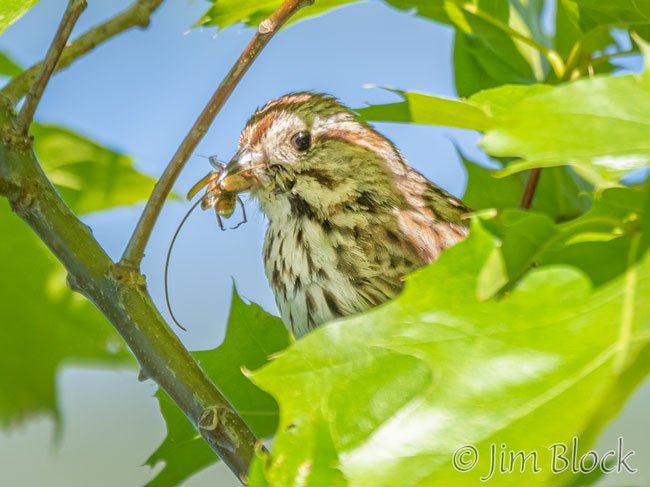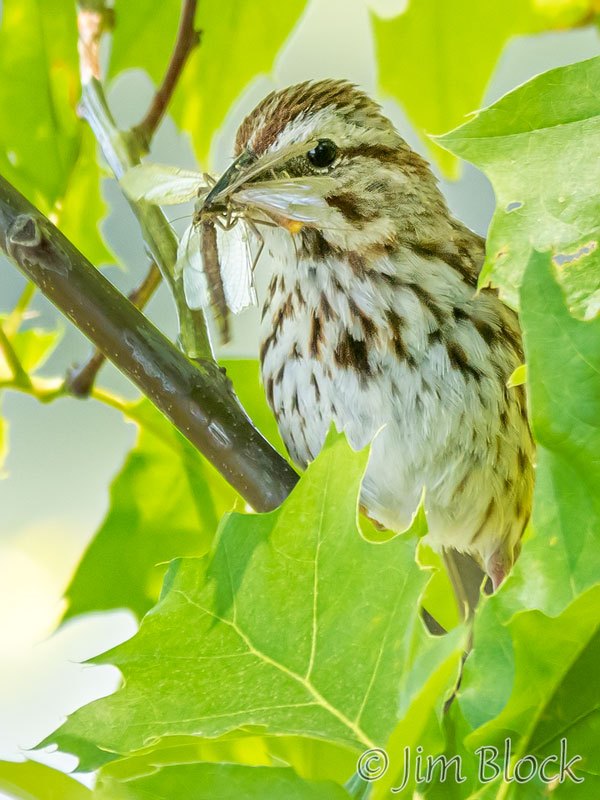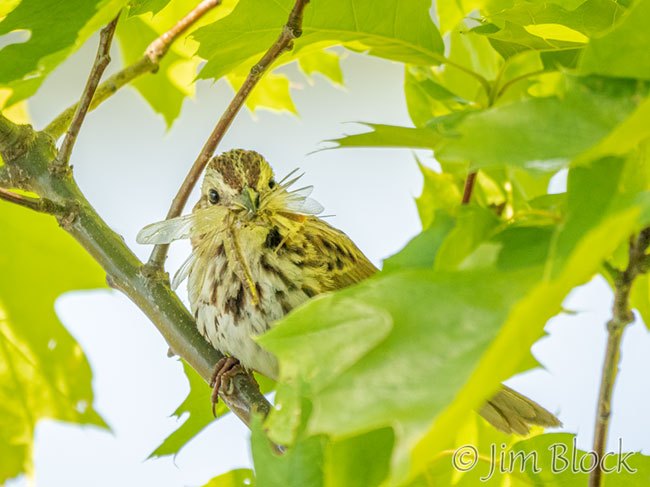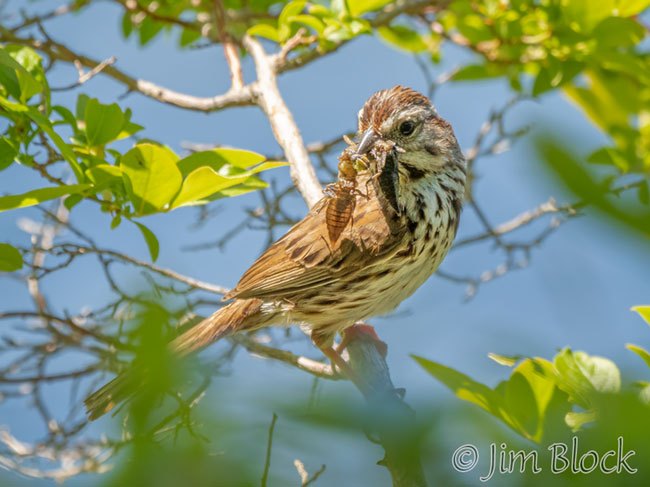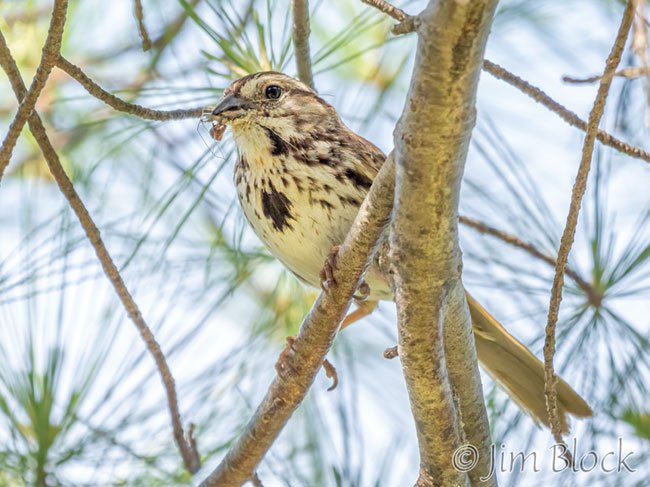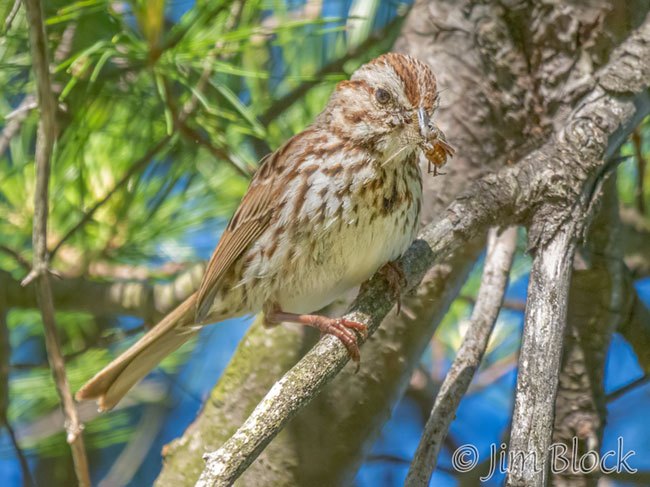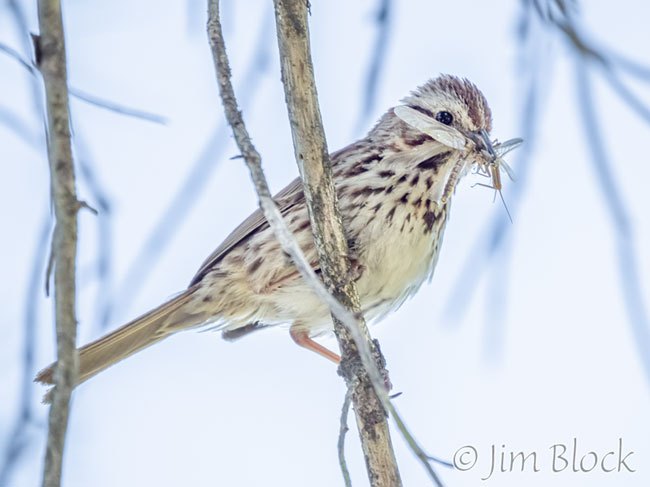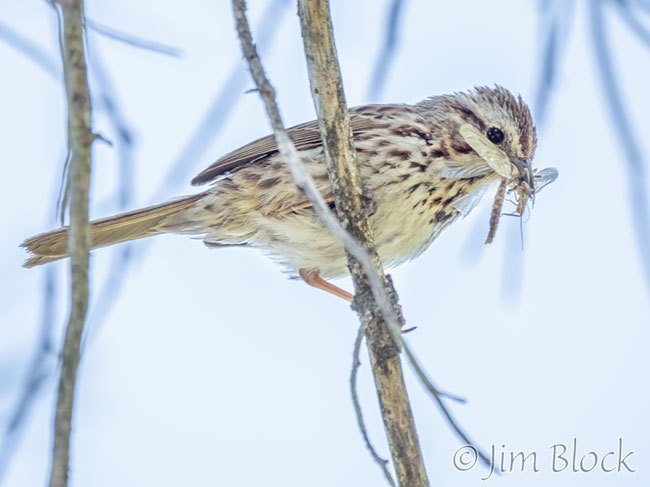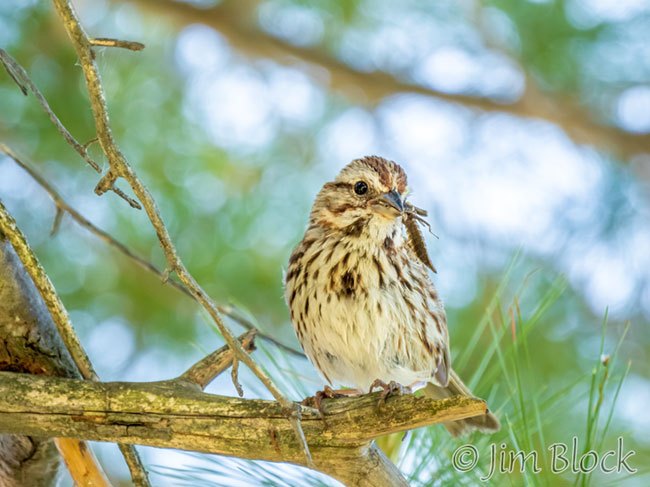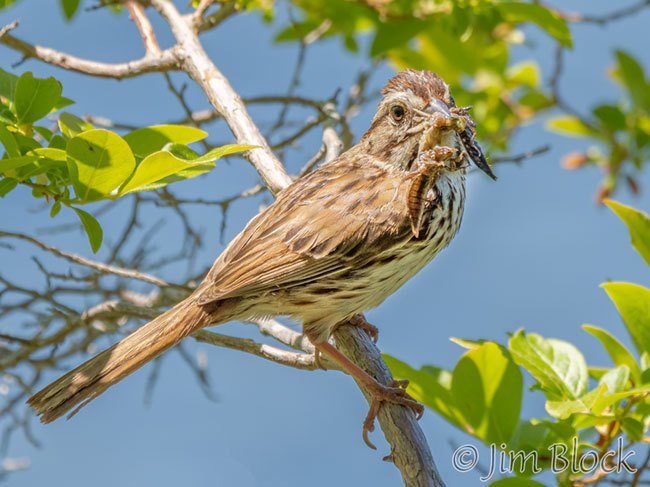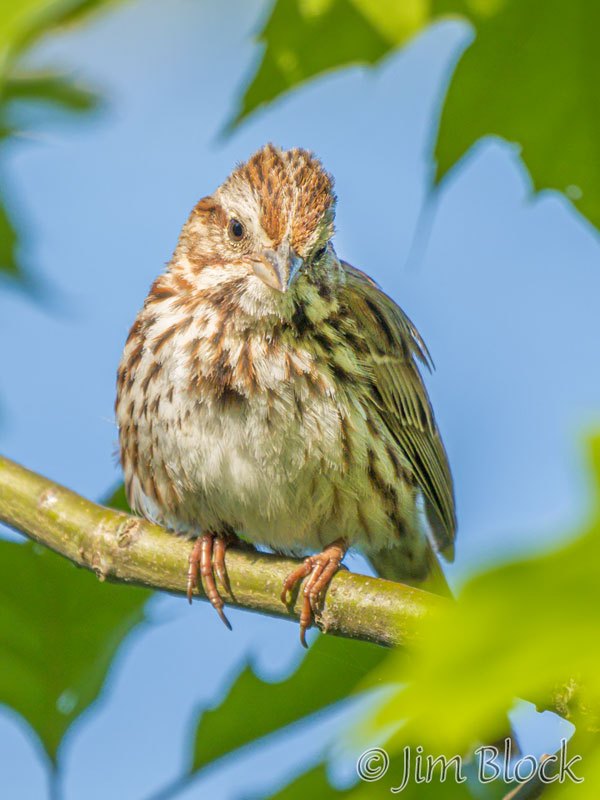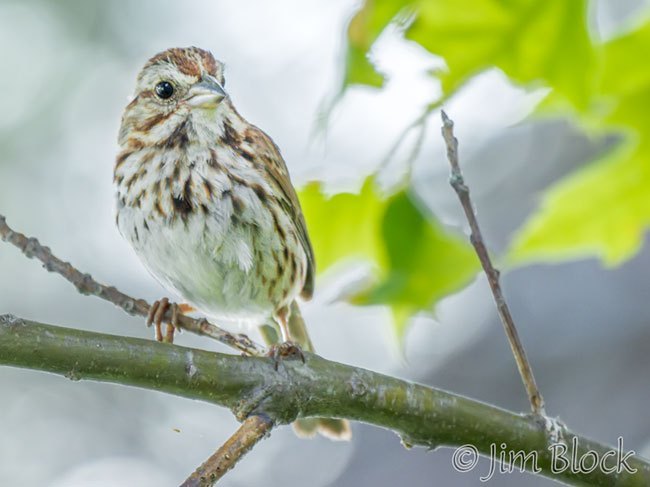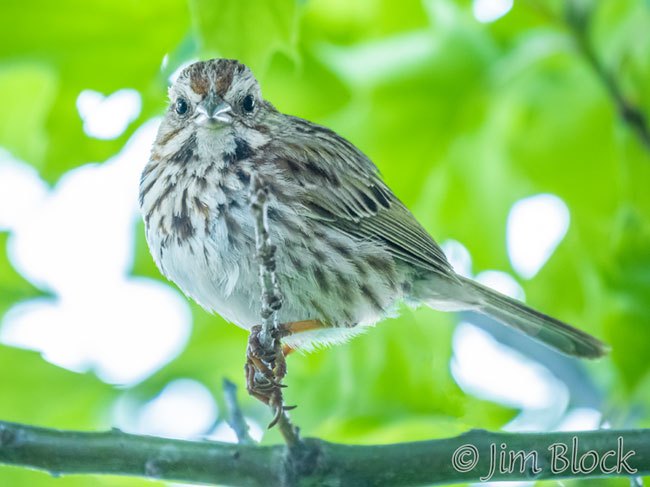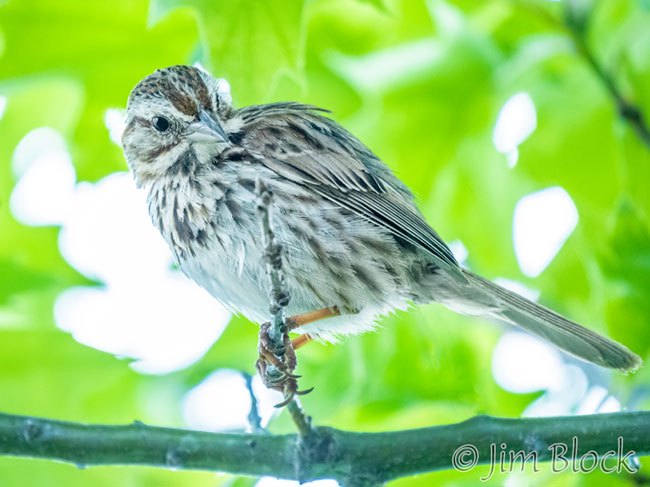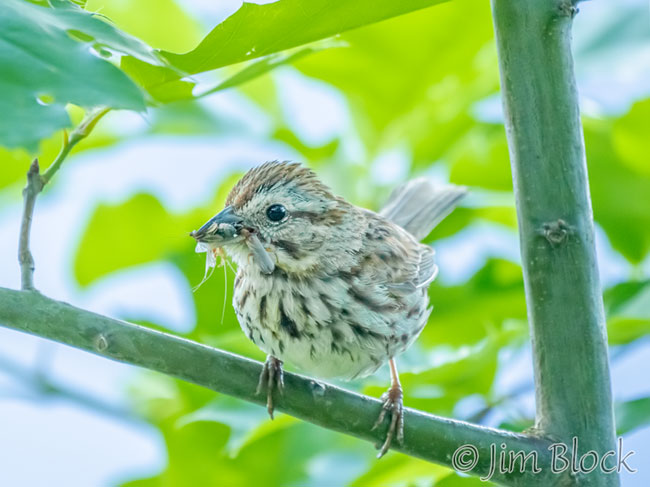
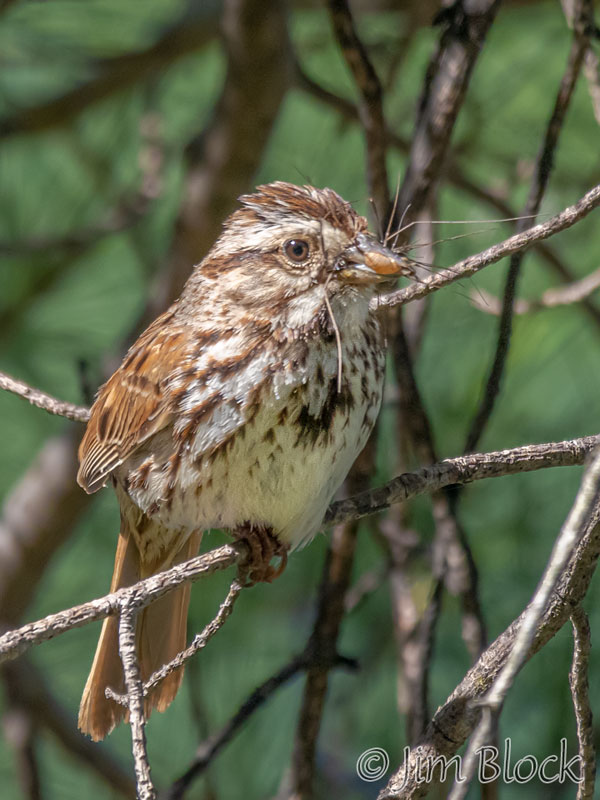 They were just a pair of common Song Sparrows, arguably our most familiar sparrow.
They were just a pair of common Song Sparrows, arguably our most familiar sparrow.
They provided great entertainment while I spent considerable time on my deck in June hiding from covid. No bird feeders around, so they had to fend for themselves. They did this with great success as they brought insects to their young in an unseen nest buried deep in shrubs.
The sparrow on the left has a member of the Pholcidae family in its beak, otherwise know as a daddy long-legs.
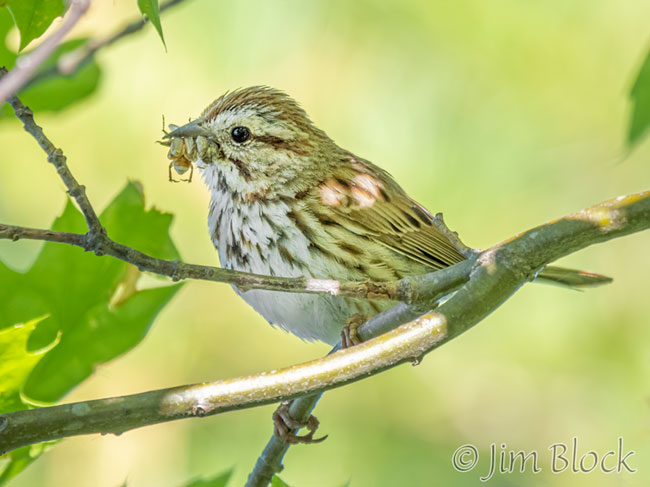
When the male’s mouth was not filled with food, he would sing his head off. Almost as often as a Red-eyed Vireo, but projecting a less monotonous song. Male Song Sparrows use their song to attract mates as well as defend his territory. He had a mate, so he was mostly defending his territory. Their songs are very crisp, clear, and precise: “seet seet seet to zeeeeee tipo zeet zeet“. But there are many variations to their song.
Melospiza melodia, the species name for the Song Sparrow, even sounds musical.
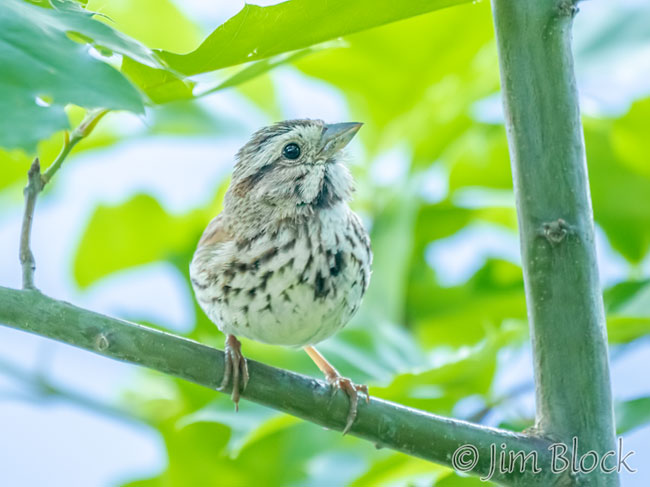
Often the Song Sparrow will perch near the top of bushes to sing. Sometimes it will also pause in a similar spot when carrying food.
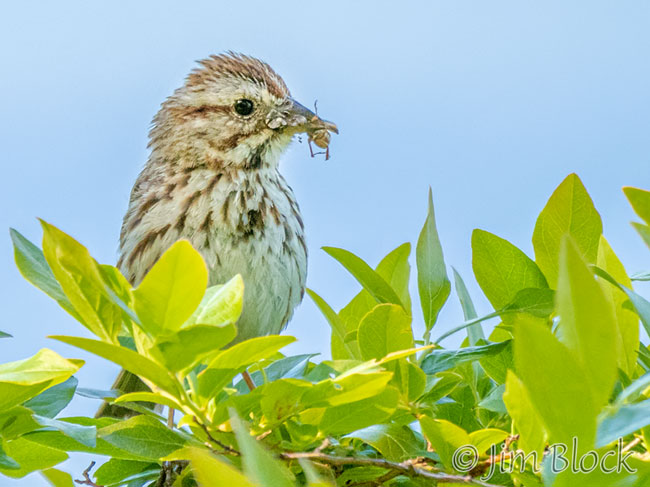
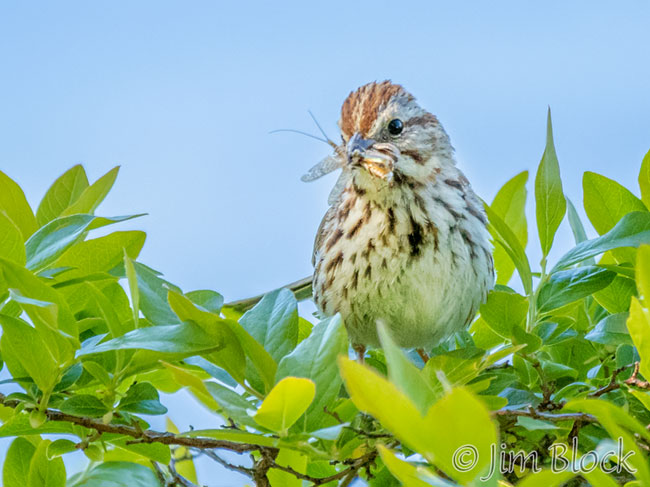
At times the sparrows seemed to have multiple insects in their bills.
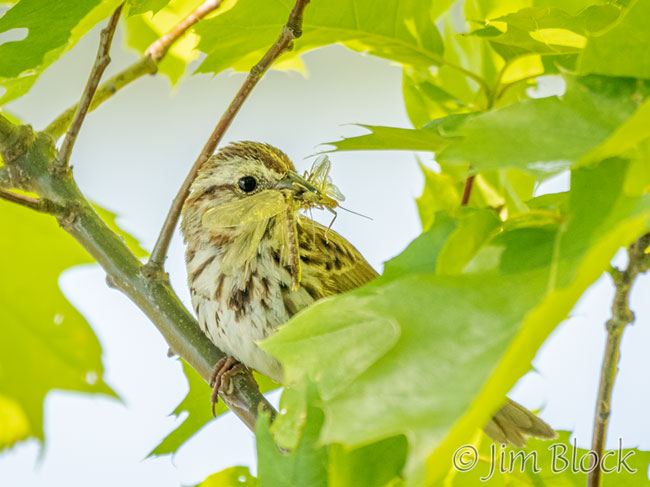
According to The Cornell Lab, “The Song Sparrow is found throughout most of North America, but the birds of different areas can look surprisingly different. Song Sparrows of the Desert Southwest are pale, while those in the Pacific Northwest are dark and heavily streaked. Song Sparrows of Alaska’s Aleutian Islands chain are even darker, and they’re huge: one-third longer than the eastern birds, and weighing twice as much.”
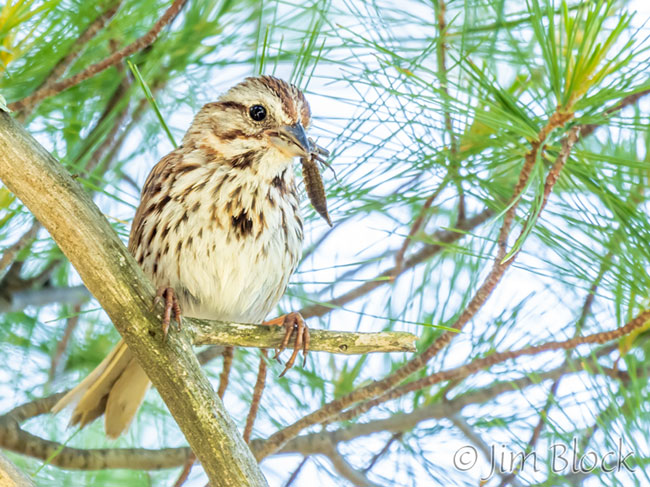
Seeing the size and shape of some of the insects, I wonder how the tiny chicks can swallow them.
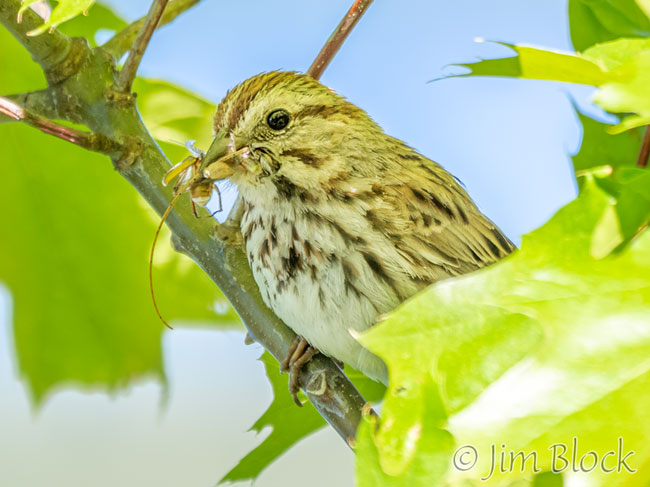
A key field mark for me is the dark messy central breast-spot as seen in the photo above and the next two below.
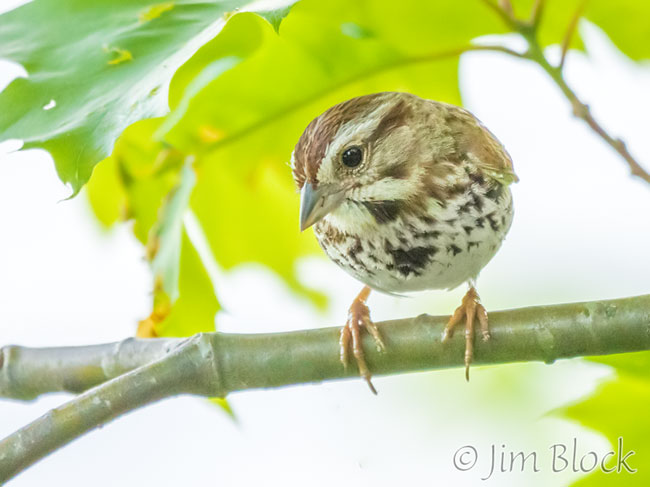
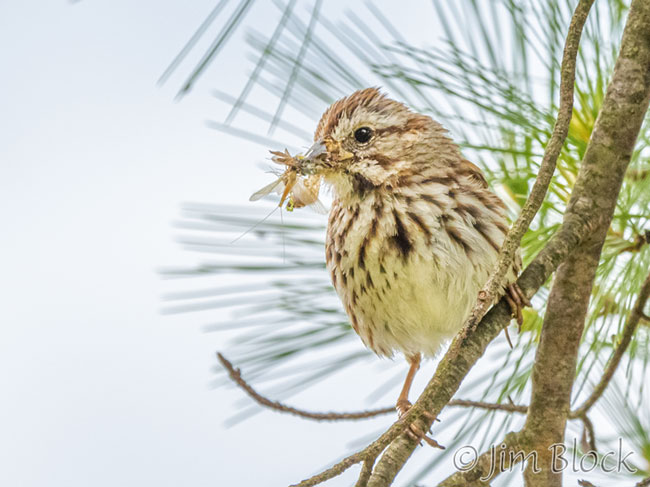
However, other species have a similar spot and similar appearance, as in the much-less-common Lincoln’s Sparrow below.
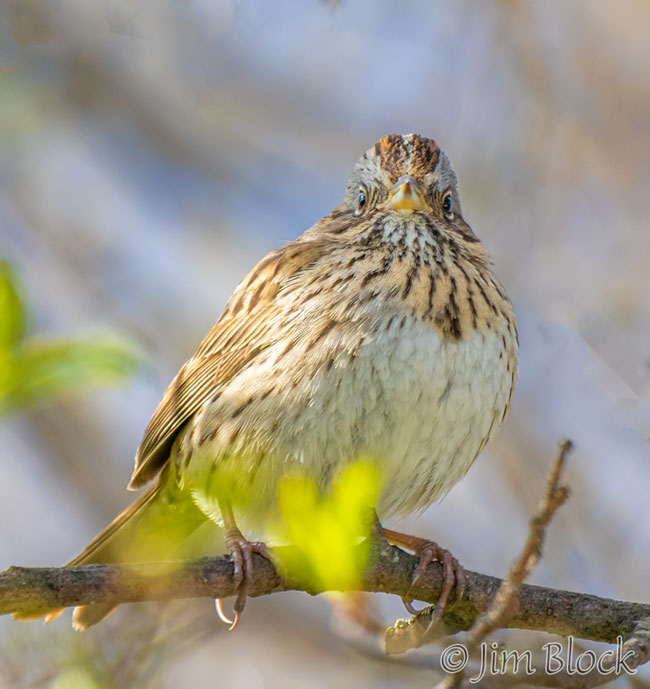
Most of the Song Sparrows in this area migrate to the southern United States during winter. They tend to arrive early in the spring.
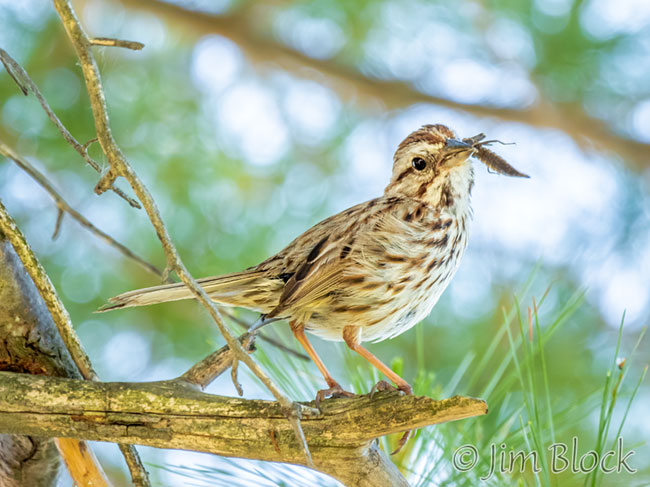
The Song Sparrow below landed on the arm of a very old homemade oak chair. Below the arm is the exoskeleton of another insect.
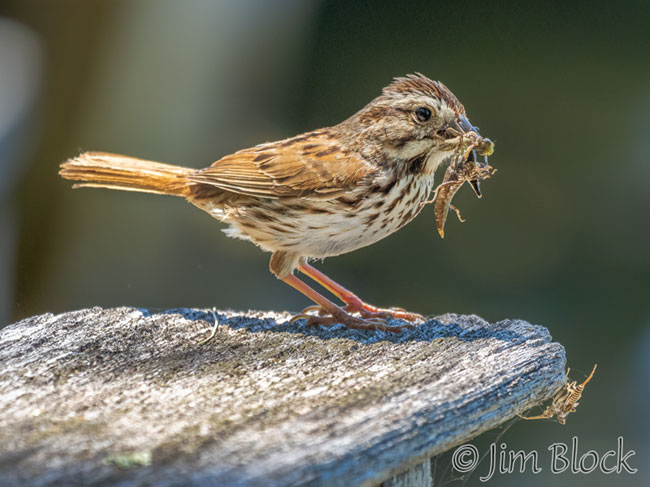
Here are some of the other photos with the sparrows carrying insects.
I also captured a few photos when they were not singing or carrying food.
This was a pleasant way to spend some time in June.
For those who care about such things, all of these photos here of the Song Sparrows were shot handheld with a mirrorless camera.

